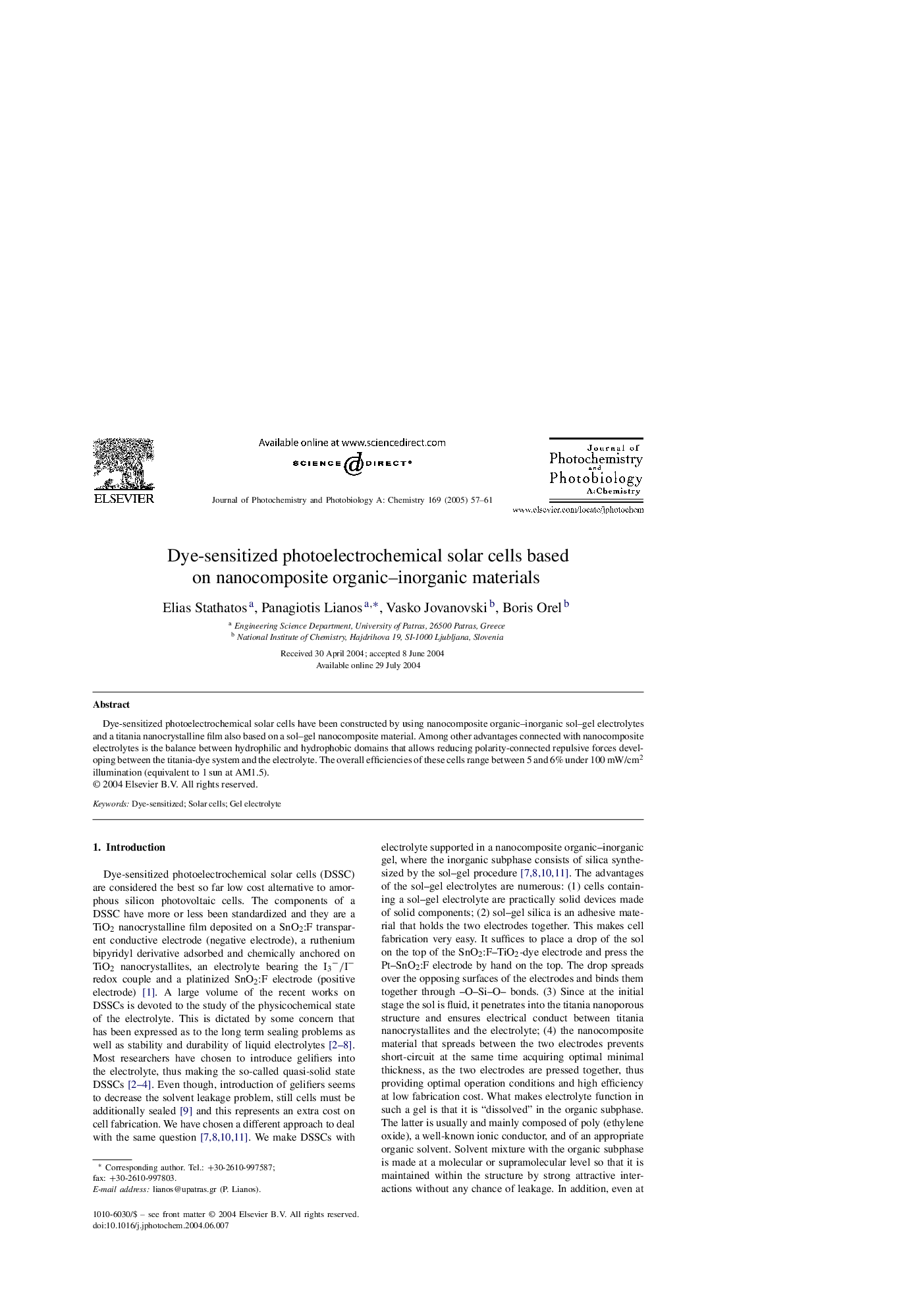| Article ID | Journal | Published Year | Pages | File Type |
|---|---|---|---|---|
| 9605777 | Journal of Photochemistry and Photobiology A: Chemistry | 2005 | 5 Pages |
Abstract
Dye-sensitized photoelectrochemical solar cells have been constructed by using nanocomposite organic-inorganic sol-gel electrolytes and a titania nanocrystalline film also based on a sol-gel nanocomposite material. Among other advantages connected with nanocomposite electrolytes is the balance between hydrophilic and hydrophobic domains that allows reducing polarity-connected repulsive forces developing between the titania-dye system and the electrolyte. The overall efficiencies of these cells range between 5 and 6% under 100Â mW/cm2 illumination (equivalent to 1Â sun at AM1.5).
Related Topics
Physical Sciences and Engineering
Chemical Engineering
Bioengineering
Authors
Elias Stathatos, Panagiotis Lianos, Vasko Jovanovski, Boris Orel,
